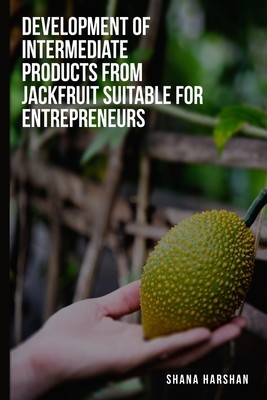
- We will send in 10–14 business days.
- Author: Shana Harshan
- Publisher: sobia
- ISBN-10: 180545949X
- ISBN-13: 9781805459491
- Format: 15.2 x 22.9 x 1.3 cm, softcover
- Language: English
- SAVE -10% with code: EXTRA
To develop intermediate products from jackfruit suitable for entrepreneurs (e-book) (used book) | bookbook.eu
Reviews
Description
Jackfruit tree is a well-known tree in tropical home gardens and perhaps the most widespread and useful member of the genus, Artocarpus which was regarded as a heavenly fruit in ancient times. It belongs to the family Moraceae and the fruit is a favourite of the masses, which is mostly due to its characteristic flavour and taste. Jackfruit has been cultivated in India since 3,000-6,000 years ago. India is the prime producer of the jackfruit in the world. Jackfruit is widely grown as an important tree in Kerala's homesteads and is also seen as a shade crop in coffee plantations. Commercial cultivation of jackfruit remains at a primitive stage in India. The traditional varieties usually bear fruits once in a year, from February to August. Usually, the flowering starts from mid-November to mid-February, depending on the location, geographic conditions and the variety. Jackfruits usually reach 10-25 kg in weight, at maturity (Rahman et al., 1995) The Jackfruit produces huge quantity of fruits than any other tree species (Alagiapillai et al., 1996). Characteristically jack trees attain a height of 18-25 meters, and stem diameter of 30-80 cm (Reddy et al., 2016). The fruit is a compound or multiple fruit with a green to yellow-brown exterior rind. Mostly, the fruits are oblong-cylindrical in shape (Plate 1). Seeds are oval in shape with a membranous testa, having unequal and creamy white cotyledons (Elevitch and Manner, 2016; Warrier et al., 1994).
EXTRA 10 % discount with code: EXTRA
The promotion ends in 20d.00:03:32
The discount code is valid when purchasing from 10 €. Discounts do not stack.
- Author: Shana Harshan
- Publisher: sobia
- ISBN-10: 180545949X
- ISBN-13: 9781805459491
- Format: 15.2 x 22.9 x 1.3 cm, softcover
- Language: English English
Jackfruit tree is a well-known tree in tropical home gardens and perhaps the most widespread and useful member of the genus, Artocarpus which was regarded as a heavenly fruit in ancient times. It belongs to the family Moraceae and the fruit is a favourite of the masses, which is mostly due to its characteristic flavour and taste. Jackfruit has been cultivated in India since 3,000-6,000 years ago. India is the prime producer of the jackfruit in the world. Jackfruit is widely grown as an important tree in Kerala's homesteads and is also seen as a shade crop in coffee plantations. Commercial cultivation of jackfruit remains at a primitive stage in India. The traditional varieties usually bear fruits once in a year, from February to August. Usually, the flowering starts from mid-November to mid-February, depending on the location, geographic conditions and the variety. Jackfruits usually reach 10-25 kg in weight, at maturity (Rahman et al., 1995) The Jackfruit produces huge quantity of fruits than any other tree species (Alagiapillai et al., 1996). Characteristically jack trees attain a height of 18-25 meters, and stem diameter of 30-80 cm (Reddy et al., 2016). The fruit is a compound or multiple fruit with a green to yellow-brown exterior rind. Mostly, the fruits are oblong-cylindrical in shape (Plate 1). Seeds are oval in shape with a membranous testa, having unequal and creamy white cotyledons (Elevitch and Manner, 2016; Warrier et al., 1994).


Reviews